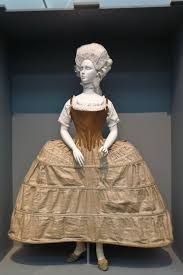
It’s the 21st century and corsets are back in style! But where did they originate?
Corsets are tightly fitting undergarments worn to shape the wearer’s figure. The earliest known representation of a possible corset appears on a figurine from Minoan art made around 1600 BCE. For most of the 16th and 17th centuries, corsets were worn as underwear or outerwear. The most common type of corset in the 1700s was an inverted conical shape, often worn to contrast the waist and heavy, full skirts.
Men also wore corsets during this time along with high heels. Many men resorted to wearing corsets called waist cinchers or underbust corsets that were designed specifically for men. Upper-class men in the Elizabethan era would wear girdles, to obtain the slim-waisted look.
During and shortly following the French Revolution, fashion headed towards loose and thin dresses. By the 1770s, shorter stays had become the fashion, these short stays were to be worn beneath the empire silhouette gowns of the Regency period.
Early Corsets were made with whalebone or wood that would be inserted into the corset to maintain its form. In the 17th century corsets were mostly made from reeds and whalebones while 18th century corsets were made of various hard materials with whalebone or cane.
In the 1820s, high-waisted dresses fell out of fashion, and what most of us now think of as corsets returned, along with the gowns associated with the Victorian era.
Corsets are indeed a fashion trend that seem to be timeless!
